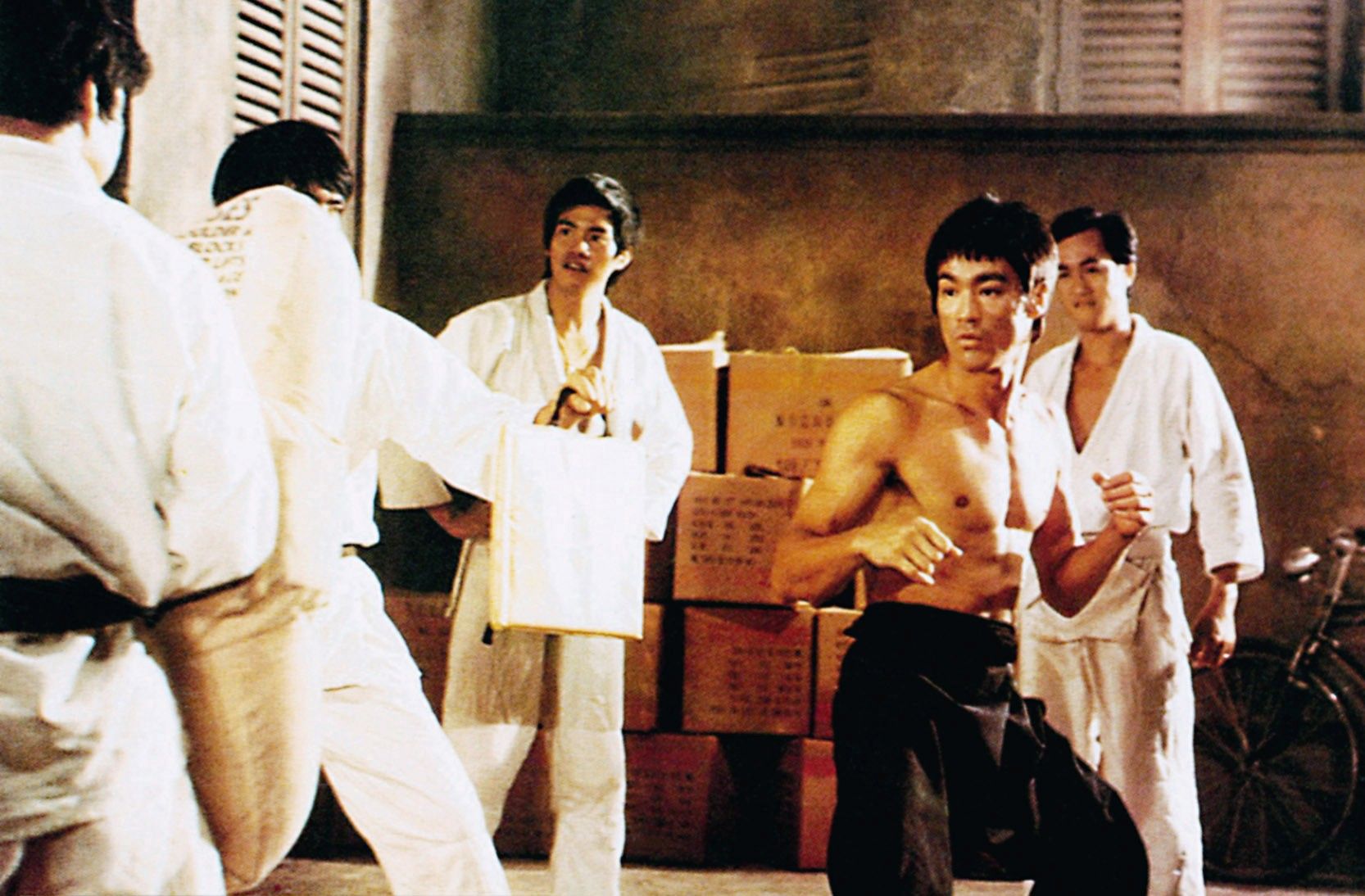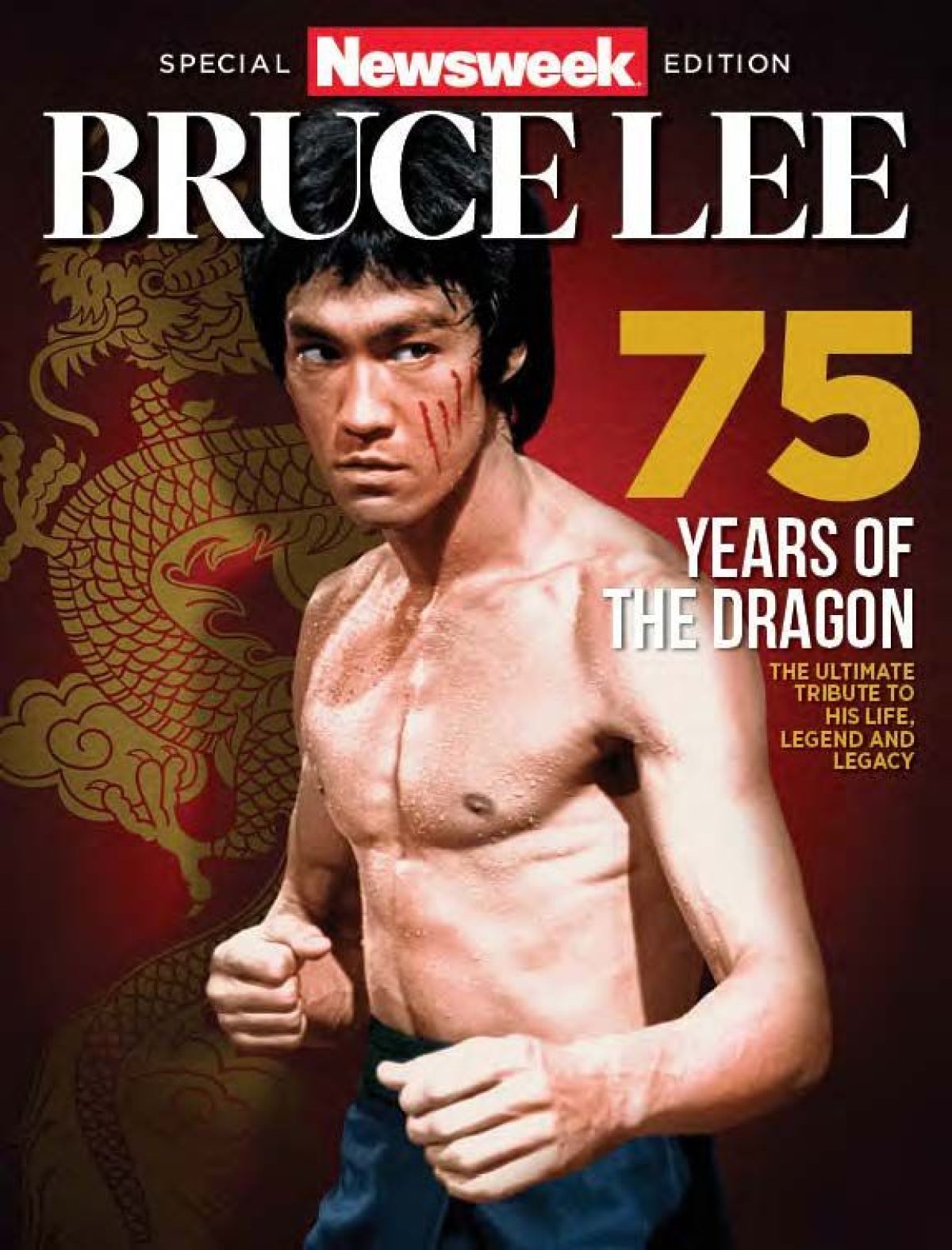
Bruce Lee took martial arts from the world of ancient schools and sages and popularized it for the entire planet. In the process, he became an icon—an example of how, through discipline and focus, anyone can achieve greatness. This article, excerpted from a Newsweek Special Edition, Bruce Lee—75 Years of the Dragon, shares Bruce's journey of bringing his unique style of martial arts to America and the world.
In 1959, a year after coming to America, Bruce Lee decided to share his martial arts knowledge. What started out as informal sparring sessions between friends transformed into a business spanning three schools that solidified Bruce's groundbreaking approach to the art of hand-to-hand combat.
The young man attracted his first pupil at a public demonstration of his talents while attending Seattle's Edison Technical School. The 19-year-old looked out into the audience for a sparring partner and spotted James DeMile, 24, a former heavyweight boxing champion in the Air Force. Noticing DeMile's athletic physique, Bruce called him up onstage. DeMile thought he was in for an easy fight, because his opponent was only 5'7" and weighed no more than 140 pounds, but soon enough Bruce had defeated the boxer. Impressed, DeMile approached Bruce after their sparring match to ask if he could take lessons from the teenager.
Through these public demonstrations, Bruce attracted a small following. The group practiced outside of Ruby Chow's, a restaurant where Bruce waited tables, after he had finished a long shift of taking orders and serving customers. DeMile introduced Bruce to one of the three men he would later certify as instructors, 38-year-old Taky "Takuaki" Kimura. A prisoner of the American internment camps during World War II, Kimura had lost his confidence. "I was brought up in one of the few ethnic families in our neighborhood and we encountered a lot of prejudice." Kimura said in Bruce Lee: Fighting Spirit, by Bruce Thomas. "I couldn't get served in restaurants, couldn't get a seat on a bus. I tramped the streets for six months, looking for a job. It destroyed my whole sense of being a person." Kimura was trained in judo during his time in the internment camp but DeMile and other friends encouraged him to see Bruce in action. "I'd seen martial artists in Japan who were older and more experienced, so I didn't see how a young kid could be any better," Kimura said. "As soon as I saw what he could do, I asked if I could join the club—although it was his thinking that impressed me, even more than his speed and power."

As Bruce gathered more followers, in 1963 he decided to open his first school, called the Jun Fan Gung Fu Institute in Seattle near the University of Washington campus. They started performing demonstrations on Seattle's KCTS-Channel 9, but the TV spots didn't always go as planned. Forgetting everything the pair had rehearsed, student and judo practitioner Jesse Glover once accidentally hit Bruce in the face. Bruce responded by knocking Glover flat on the floor.
"It was more like he was saying, 'Here's what I have to offer—you take it. In the meantime, I'm going to be training and developing myself,'" DeMile said in Bruce Lee: Fighting Spirit. "Fortunately, I absorbed a tremendous amount of his philosophy and technical skill because I was interested. Meanwhile, Bruce was changing as he developed more flow, more energy, more intensity. His time in Seattle was one for experimenting with various stances and techniques to overcome his limitations."
Bruce didn't have much patience for students who didn't know the basics and couldn't keep up with his rigorous classes. Most students who attended Bruce's school had already received training in judo, karate or boxing. Studying at Jun Fan Gung Fu had an intense probationary period of grueling physical conditioning several times a week, including strenuous abdominal and arm workouts, which deterred students from continuing Bruce's classes. Those who stuck with the training, however, would discover how valuable conditioning was when they faced off against Bruce, as he would often personally square off against his charges in training sessions. Shortly after marrying Linda Emery, Bruce decided on a change of scenery from Seattle to Oakland, California. He and his wife moved in with Chinese martial arts expert James Yimm Lee, 20 years Bruce's senior, who became a close friend and his second certified instructor. They opened up a school together in Oakland in 1964, which drew the ire of Chinese martial arts experts.

After sparring with an adversary, Bruce noticed his own weaknesses and began to develop his own style—Jeet Kune Do—which translates as "The Way of the Intercepting Fist," drawing from his street fighting years. Bruce believed one should be able to improvise in a fight and shouldn't be bogged down in tradition. Months later, Bruce established his third and final school in Los Angeles with Dan Inosanto serving as an assistant instructor. But Bruce was still at a crossroads. He wasn't sure if he wanted to establish a national chain of the Jun Fan Gung Fu Institute or if he wanted to take his acting career to new heights.
Bruce decided he could share his fighting style with more people through film. He left his three schools to his instructors Kimura, James Yimm Lee and Inosanto. Kimura and Inosanto continue to teach Bruce's martial arts style to any willing to learn.
This article is excerpted from a Newsweek Special Edition, Bruce Lee—75 Years of the Dragon, by Issue Editor James Ellis.

Uncommon Knowledge
Newsweek is committed to challenging conventional wisdom and finding connections in the search for common ground.
Newsweek is committed to challenging conventional wisdom and finding connections in the search for common ground.





